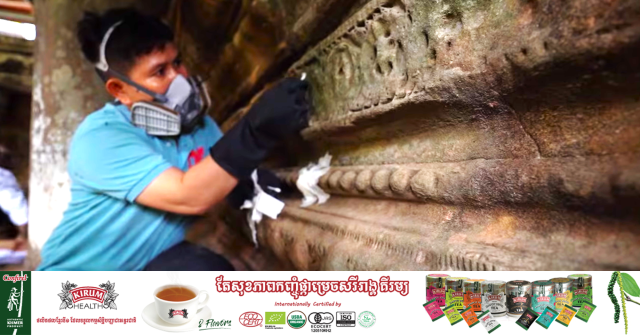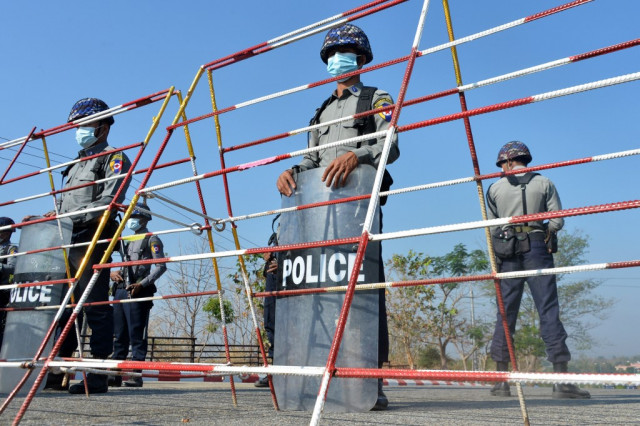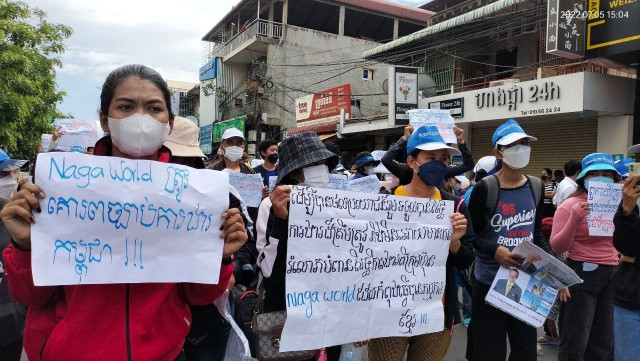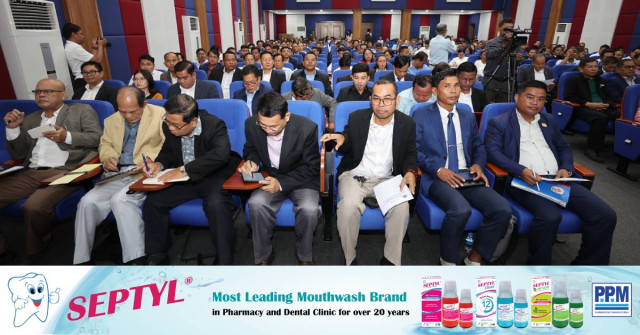How do Temple Stones get Sick?

- By Sem Vanna
- September 17, 2023 3:00 PM
SIEM REAP - Restoration and preservation have been continuous after the region of Angkor was largely abandoned centuries ago.
As solid or indestructible as they may seem from the size of the stones, temples get degraded by the elements if not properly taken care of.
ThmeyThmey25’s journalist Sem Vanna travelled to Banteay Samre temple in Siem Reap province to find out more about a project teaching young workers how to preserve and restore the stones.
Rik Reth, a technical officer of the Department of Conservation of Monuments and Preventive Archaeology of the APSARA National Authority, explains at one of the on-field classrooms.
_1694866457.png)
Sem Vanna: How many students do you currently have and what do they learn?
Rik Reth: During this second phase of training, we have about 20 students, six of whom are female. The first phase started in 2013 with 13 smaller stages divided within each phase.
Our students are required to learn for two to two and a half years. Due to the pandemic, the process was delayed. Since 2021, we have completed seven stages of the training.
_1694866512.png)
With instructors from our country and abroad, students are taught to understand rock formations, types and compositions as well as the theory in chemistry.
Related fields such as archaeology and architecture are also present during the training as this broader understanding allows students to be more comprehensive on how the temples were constructed and how they could be preserved or restored.
To preserve is to maintain what is left while making it last as long as possible. To restore is to make a replacement for something. Our work involves both.
_1694866769.png)
Sem Vanna: Angkor Park is a big place. With so many temples within a 401 square kilometres area, do you think your team has enough manpower? And how do you manage the work?
Rik Reth: Including other related teams, our 40-member group is not enough for this large park. We need more training and human resources when it comes to preservation.
Most of the historical records appear at the surface of the stones such as bas-reliefs or inscriptions. Therefore, once the outer layer is gone, we will lose a chunk of the history. In preservation, we have to make sure that the surface is healthy.
Unfortunately, that is also where most deterioration happens. That is why it is important to both preserve and restore.
_1694866575.png)
Well known sculptures such as those inside Angkor Wat temple experience issues on the surface. First, the stones are old. Second, the internal chemistry of the stone starts showing problems.
Third, the outside environment also affects them. The stone surface may fall down layer by layer over time due to the monsoon effect of the region. Inside the stone, there are forms of clay and other mineral compositions which soak and release water, changing the shape of the stones.
Algae, depending on the type, can help or harm the stones. Sometimes, when they grow, their roots suck out the minerals from the stone causing deterioration from the inside.
_1694866661.png)
Sem Vanna: With an area so large, how do you evaluate which temple or which part of the temple to intervene in first?
Rik Reth: Inside APSARA Authority, the work is divided into teams such as those who go on patrol and observe the areas as well as tourist guides who can also help inform us on specific places which need attention.
In addition, our students here can also travel to the site to evaluate the situation in more detail. Instead of having patients coming to our office, the stone doctors must go and find sick patients.
_1694866695.png)
A combination of factors contributes to the deterioration of stones. The main one is nature followed by animals and human activities. Let us look at this particular pillar as an example. It bears all the weight from above and it contacts the ground directly.
If the amount of water and moisture remain more or less unchanged, the integrity of the pillar will remain more or less the same. However, when water recedes, some substances get stuck inside the stone pores, creating issues.
Yet, if the stone is submerged underground, that would not be much of an issue. Nevertheless, the bottom of the structure will inevitably deteriorate at some point.
_1694866736.png)
Conducted in Khmer for ThmeyThmey News, this interview was translated by Ky Chamna for Cambodianess News.
Related articles:
Ta Prohm: Maintaining the Trees to Protect the Temple
Restoration Gives New Life to Angkor Sites
To watch the interview in Khmer, click here.















